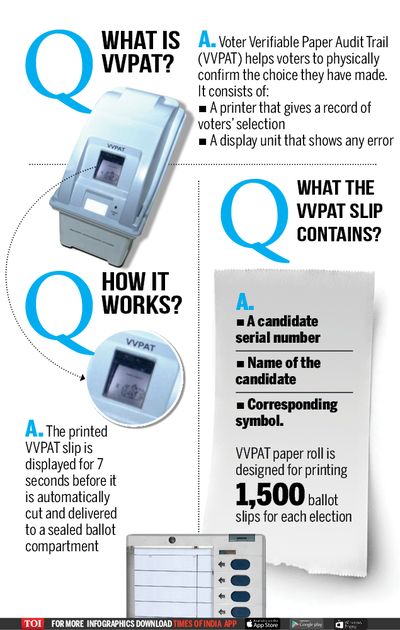Mains > Polity > Election > Elections
SYLLABUS
GS 2 >>> Indian Polity >> Elections
REFERENCE NEWS
The recent Supreme Court judgment on VVPAT reaffirmed confidence in the integrity of the existing electoral system, which incorporates both VVPAT and EVM technologies. The court dismissed a request for complete verification of VVPAT slips alongside EVM counts:

| ADVANTAGES OF EVMs | CHALLENGES OF EVMs |
Cost efficiency: EVMs eliminate the need for producing and printing traditional paper ballots, leading to significant cost savings in terms of transportation, storage, and the recruitment of counting staff. Prevention of booth capturing: By limiting the rate of vote casting to four votes per minute, EVMs have effectively curbed the possibility of booth capturing, thereby enhancing the security and integrity of the electoral process. Administrative convenience: EVMs offer administrative convenience to polling officers by simplifying the voting process and streamlining the counting procedure, resulting in faster and more accurate election outcomes. Time effectiveness: The adoption of EVMs has drastically reduced the time required to conduct elections and announce results, contributing to greater efficiency in the electoral process. | Vulnerability to hacking: Due to their electronic nature, EVMs are susceptible to manipulation and hacking, posing a significant threat to the integrity of election results. Lack of transparency: The confidentiality of EVM source code impedes public scrutiny, making it difficult for independent experts to assess their security and reliability. Security inadequacies: EVMs are vulnerable to unauthorized access, physical tampering, and cyberattacks, raising concerns about the overall security of the voting process.
|
| ADVANTAGES WITH VVPAT: | CHALLENGES WITH VVPAT |
Enhanced vote verification: VVPAT provides voters with immediate confirmation that their vote has been correctly recorded, empowering them to verify the accuracy of their choices and ensuring transparency in the voting process. Direct Recording Election System (DRE): Operating within a Direct Recording Election system, VVPAT helps detect any fraudulent activities or technical malfunctions, thereby safeguarding the integrity of elections. Increased transparency: VVPAT allows for manual counting of votes in case of discrepancies or disputes, providing electoral authorities, voters, and political parties with greater transparency and confidence in the electoral process. This mechanism ensures that electronic voting results can be cross-verified and validated through physical records, enhancing overall trust in the democratic process. | Limited sample size: The current practice of verifying EVM counts with VVPAT slips using a small sample size may not be scientifically adequate to detect faulty EVMs during counting. Technological glitches: VVPATs are prone to malfunctions, such as paper jams and sensitivity to environmental conditions, which can disrupt the voting process and compromise result accuracy. Voter intimidation: The assembly-wise counting of VVPAT slips may lead to voter profiling and intimidation by political parties, undermining the secrecy and fairness of the electoral process. Storage concerns: Ensuring the safe storage and proper integration of VVPAT machines with EVMs pose logistical challenges, potentially affecting the efficiency and reliability of the electoral system. |
WAY FORWARD
PRACTICE QUESTION
Q: What do you understand by VVPAT? What are the issues associated with it and what are the steps taken by ECI in this regard? (10M, 150W)